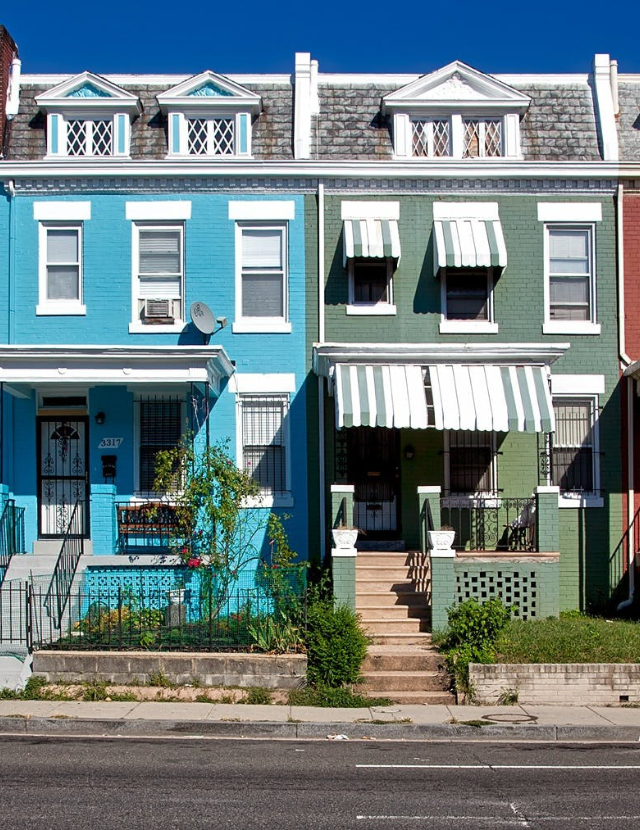Recovery Housing Project Develops First National Database and State Level Reports to Understand Needs, Gaps
Program
Highlights

As part of a national effort, PHI’s Alcohol Research Group and its partners developed the first-ever database to track recovery housing for people undergoing substance use treatment in the United States and state-level reports for stakeholders to understand the service needs, gaps in housing and determine priority areas for recovery residences.
10.3K+ sober housing residences were identified by NSTARR in the U.S.
3.6K+ providers were identified who operate sober housing residences in the U.S.
Recovery housing is an important component to the continuum of care for people who are undergoing treatment for alcohol or drugs and can many times make the difference between getting sober and relapsing. The Public Health Institute’s Alcohol Research Group (ARG) led a national project, the National Study of Treatment Addiction Recovery Residences (NSTARR), in collaboration with study experts and partners and developed the first-ever database on recovery homes in the United States and state-level reports. The project and reports provide national and county-level assessments of the current recovery housing landscape for each state, allowing local providers, advocacy groups, and other stakeholders to better understand the service needs and gaps in recovery housing in their area.
Identifying the Data
NSTARR is the largest and most diverse study of recovery housing to date. The NSTARR project is multi-faceted and represents a collective effort among investigators, collaborators, and consultants across multiple institutions. The project is guided by 17 study experts who represent different stakeholders such as those in substance use recovery, housing, providers of recovery housing, recovery housing researchers and leaders of national recovery housing organizations. The study experts helped to refine the project’s study procedures and ensure that the Alcohol Research Group’s work was relevant to those who would be potential consumers of it.
Data collection for the project began in January 2020 and was completed in June 2023. Information was gathered from publicly available sources and lists maintained by entities who tracked recovery housing in the U.S. Recovery residence operators also played an integral role in making information about their recovery residences publicly available and contributing to the NSTARR database.
The data collected was then analyzed and used to develop the first comprehensive database and assessment of recovery housing. As part of the assessment, the study team created individual, state-level reports which provide a snapshot of the number and location of recovery residences as it relates to population density, alcohol and drug-involved mortality, and COVID vulnerability in the 50 states, including Washington, D.C.
COVID vulnerability was mapped using county-level data from the Centers for Disease Control and Prevention’s COVID Vulnerability Index (CCVI). The CCVI measures seven social determinants of health in combination with COVID risk factors to identify communities requiring additional support brought on by the pandemic.
Recovery homes where locating information was available were geocoded and linked with U.S. Census and other data to contextualize where recovery residences are located and provide a visual snapshot of need and ability to support that need based on the current homes that exist. The state-level reports were based on data collected between January 2020 and January 2021, and represent 10,358 distinct recovery residences/homes that are operated by 3,628 different recovery housing providers. Data for each state is also available and reported at the county level. This analysis is a valuable tool for counties and states to determine priority areas for recovery residences.
What the Data Revealed
Data from the state reports revealed some of the following findings:
- Recovery residences were more likely to be in urban settings v. rural.
- Recovery housing was located in counties with higher substance use mortality.
- Many counties that had recovery homes experienced COVID risk factors and required additional support as a result of the pandemic.
About the Alcohol Research Group
The Alcohol Research Group (ARG) conducts and disseminates research on the epidemiology of alcohol and other drug consumption and problems, alcohol health services research, and alcohol policies while also training future generations of researchers. ARG is also home to the National Alcohol Research Center. NSTARR is a project led by the ARG that focuses on tracking recovery housing in the United States.
For more information, visit the NSTARR website and access the state recovery housing reports here. Funding for this project was provided by the National Institute on Alcohol Abuse and Alcoholism at the National Institutes of Health.
Work With Us
You change the world. We do the rest. Explore fiscal sponsorship at PHI.
Support Us
Together, we can accelerate our response to public health’s most critical issues.
Find Employment
Begin your career at the Public Health Institute.

